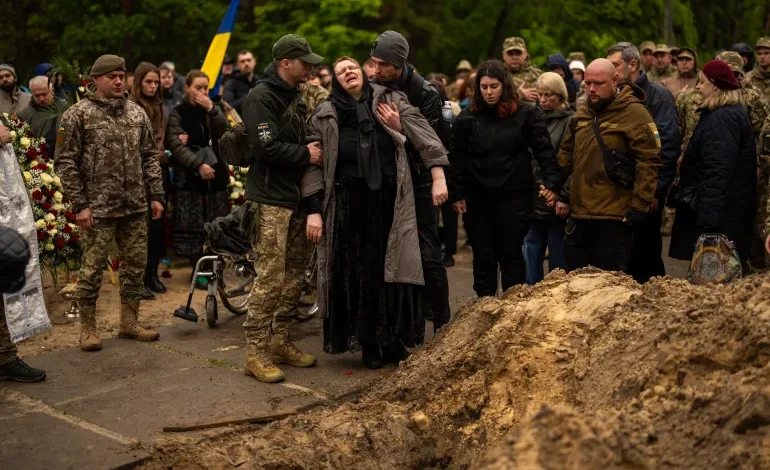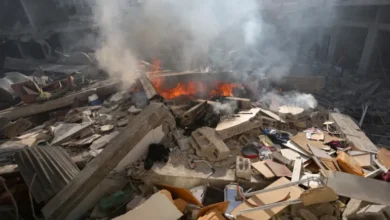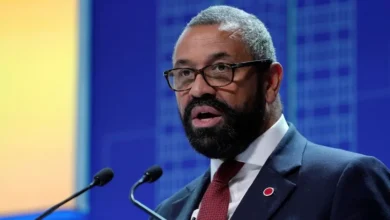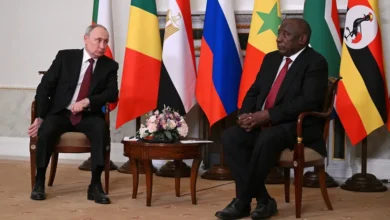Why is Ukraine’s army facing a desertion crisis?

More Ukrainian soldiers have deserted the army this year than ever since the onset of a war that analysts say has seen both sides make gains and report losses.
Prosecutions for desertion from Ukraine’s army are thought to have hit at least 30,000 – quite possibly much more – already this year. This is several times the number in 2022, the year the war began when citizens and foreigners voluntarily poured into the military to push Russia back.
Those found guilty are given between five and 12 years in prison. However, some defectors say that is a better option than facing what might be an endless, undefined period on the battlefield.
Desertion has become so common that Ukraine’s parliament, the Verkhovna Rada, took the unprecedented step of decriminalising first-time attempts to flee the army on August 20, 2024, as long as those caught agree to return to duty.
Here’s why analysts say more men are leaving the army and why it is not just a problem for Ukraine:
According to the Kyiv Post, it is believed that about 60,000 people have been facing criminal charges for fleeing their posts since the war started. The Ukrainian daily cited documents from the prosecutor general, with almost half of those cases initiated this year.
However, British daily The Times also cited figures from the prosecutor general which, it said, showed some 51,000 criminal cases were initiated for desertion and abandonment of a military unit between January and September of this year. El Pais newspaper cited a closer figure of 45,543 desertions between January and August this year, which it said was data from the Prosecutor General’s Office which had been leaked to the Ukrainian press.
All these figures are much higher than the 22,000 criminal charges filed for the same offence in 2023 and just 9,000 cases in 2022.
It is unclear if those fleeing the army are mostly conscripts, or if some who earlier volunteered are also abandoning their posts. Volunteers who are not Ukrainian are allowed to withdraw from the army after six months of fighting.
Why are so many soldiers deserting?
Low morale caused by exhaustion is the main reason.
Soldiers complain of having to grind through for days on end under heavy fire without a pause because there is no one to relieve them. Those on the front lines have told the media that they have gone from battle to battle with little rest since Russia’s invasion in 2022.
Troops are allowed to take 10 days off twice a year, but manpower shortages sometimes delay even those vacations. Soldiers and their families are pushing for breaks that range between a month’s vacation and a three-year rotation.
One soldier placed under investigation for desertion – Serhii Hnezdilov, who is also a journalist – told The Times newspaper in the UK: “At least in prison you know when you will be able to leave.” He was arrested after writing about his decision to leave the army on Facebook in protest against conditions in the army.
What condition is the army in?
It is not clear how many men Ukraine has lost in the war, but analysts say they might be in the tens of thousands. Western estimates put it at 80,000 soldiers.
Experts say the rising number of desertion cases comes as Ukraine faces a shortage of soldiers on the battlefield – a problem it is trying to solve by forcefully mobilising fighters.
As few as five to seven Ukrainian soldiers are having to face some 30 soldiers from the Russian side in some cases, Simon Schlegel, an analyst with the Crisis Group, told Radio Free Europe, a Prague-based publication.
Analysts estimate there are about one million military personnel in the Ukrainian army compared with some 2.4 million on the Russian side, but neither country publishes those figures. Ukrainian army commanders put the ratio of Russian versus Ukrainian combatants at 10 to 1.
Insufficient manpower is an old problem for Ukraine, even before the start of the war and despite early enthusiasm to join the military right after the invasion, analyst Keir Giles of the United Kingdom’s Chatham House think tank told Al Jazeera.
“Ukraine has been grappling with this for a long time,” he said, adding that the low numbers could also be fuelling further desertions. “There’s exhaustion, there’s shell shock … The initial flush of excitement about the war has worn off, and some people have started to realise that this is for the long haul.”
Alongside the mental and physical fatigue that many soldiers are suffering from prolonged periods at the front line, the Ukrainian army has to deal with inadequate weaponry and ammunition as well.
Despite some wins, including a major incursion into Russia’s Kursk region in August, Ukrainian troops have often found themselves on the back foot in the nearly 32-month-long war with Russia.
Crucially, soldiers say they are poorly armed and complain of having the enemy in sight, watching them advance, and being unable to fire because they have no ammunition, according to accounts from soldiers reported by CNN. Many said they felt guilt for not being able to provide infantry units with adequate cover. Commanders have also told journalists that they have been forced to watch men from entire units die in the war because of the weapons shortage.
Speaking in the United States Congress during a testimony on April 10, General Christopher Cavoli, head of US European Command, described Russia’s five-to-one advantage in artillery shells, predicting that would soon grow to 10 to one.
Why is the army in such a poor state?
Ukrainian officials blame Western allies – the European Union and the US – for being too slow to provide military aid. President Volodymyr Zelenskyy has repeatedly urged Washington, with Congress split on the issue of allocating more aid to Ukraine, to speedily deliver promised funds to allow the country to buy more artillery shells and air defence systems.
On April 24 this year, the US passed a bill after a delay of almost a year, granting a $61bn aid package largely meant for Ukraine. Military aid deliveries to the country as part of the package included vehicles, Stinger air defence munitions, ammunition for high-mobility artillery rocket systems and antitank munitions.
In a statement on April 29, Zelenskyy thanked the US government and said the support had “started arriving” but reiterated a need for speedier help.
“The speed of deliveries means stabilising the front,” Zelenskyy said.
European countries collectively delivered 118.2 billion euros ($128.2bn) to Ukraine between April 2022 and September 2024, while the US has delivered 84.7 billion euros ($91.9bn), according to data from the Germany-based Kiel Institute. Analysts say the upcoming US election that could see former President Donald Trump return to the White House is causing more uncertainty for Ukraine. Trump has repeatedly threatened to cut US funding to the country and many of his Republican Party members back him on the topic.










